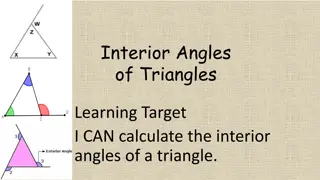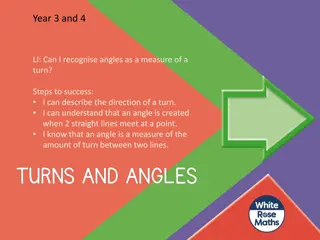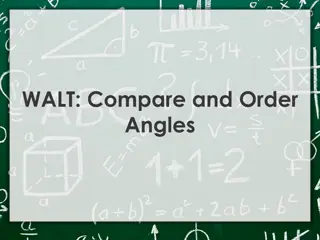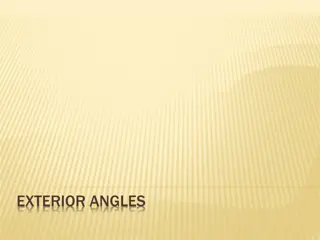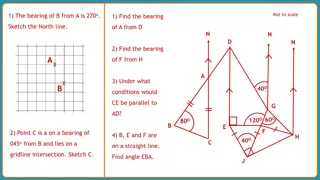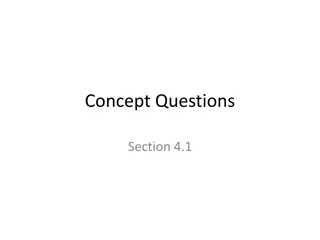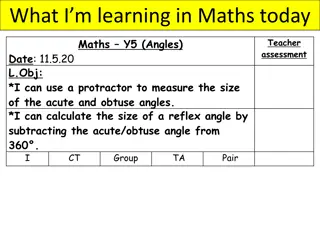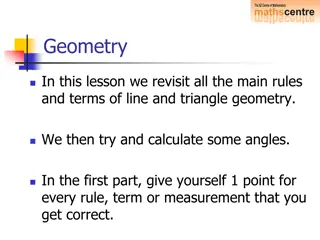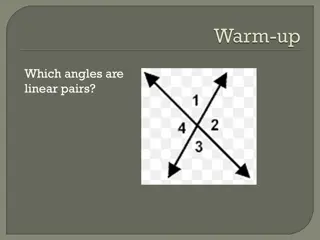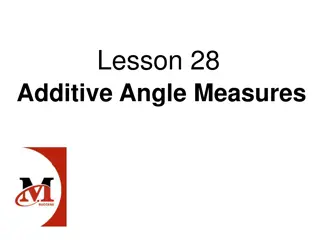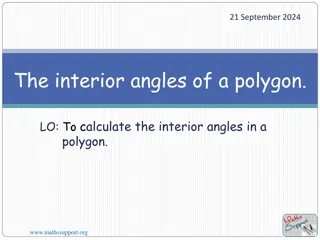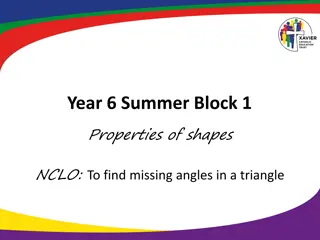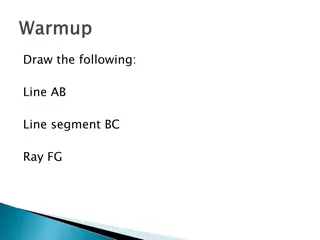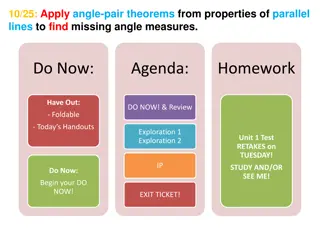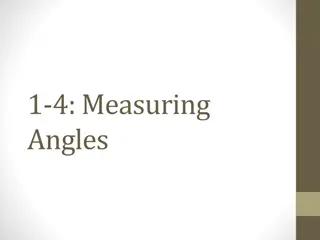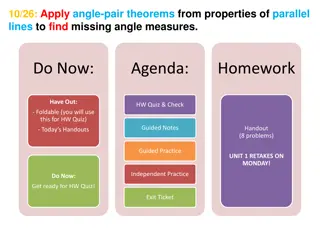Larger and smaller angles
In this explicit teaching on larger and smaller angles, students learn to use ratios in right-angled triangles to predict heights of objects. Through visible learning and exploration, they discover how the ratio between sides of a triangle remains constant when the angle is the same. Various scenarios are presented to encourage critical thinking and measurement techniques using a clinometer. The success criteria focus on applying these concepts practically to find positions for desired angles towards tall objects. This engaging lesson culminates in students predicting tree heights based on angle ratios and understanding the similarity between triangles. (461 characters)
Download Presentation

Please find below an Image/Link to download the presentation.
The content on the website is provided AS IS for your information and personal use only. It may not be sold, licensed, or shared on other websites without obtaining consent from the author.If you encounter any issues during the download, it is possible that the publisher has removed the file from their server.
You are allowed to download the files provided on this website for personal or commercial use, subject to the condition that they are used lawfully. All files are the property of their respective owners.
The content on the website is provided AS IS for your information and personal use only. It may not be sold, licensed, or shared on other websites without obtaining consent from the author.
E N D
Presentation Transcript
Larger and smaller angles Explicit teaching
Larger and smaller angles part 1 Visible learning Learning intentions To be able to explain that the ratio between sides of a right-angled triangle remains the same if the angle is the same, regardless of size. To be able to use ratios to find the heights of objects. Success criteria I can use a clinometer to find positions that give desired angles towards tall objects. I can use ratios in right-angled triangles to predict the heights of objects.
Larger and smaller angles part 2 Launch Think pair share What if we can t get back far enough to form a 45 angle? How could we measure the height in this scenario? What if we can t get close enough to form a 45 angle? How could we measure the height in this scenario? 3
Larger and smaller angles part 3 Explore Predict the height of the tree. How do you know? 4
Larger and smaller angles part 4 Explore Test: Does the angle always cause this ratio? Height to base ratio Height Base Approximate angle 45? 63? 1:1 eg 4 cm eg 4 cm Yes 2:1 eg 6 cm eg 3 cm Yes 3:1 4:1 5:1 10:1 1:2 1:3 1:4 1:5 1:10 5
Larger and smaller angles part 5 Explore Predict the heights of the two trees shown. 6
Larger and smaller angles part 6 Summarise Exit ticket How tall is the tree? How do you know? 7
Larger and smaller angles part 7 Summarise How do you know that these triangles are similar? 8
Success criteria I can use a clinometer to find positions that give desired angles towards tall objects. I can use ratios in right-angled triangles to predict the heights of objects.


